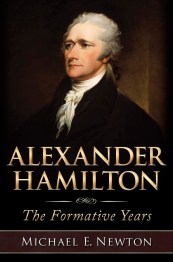Up until two days ago, there was a growing movement to replace Andrew Jackson on the $20 bill with a woman. A bill was proposed in Congress to do this. A website was established to promote this idea. A poll was taken to choose a worthy woman to replace Jackson, which Harriet Tubman narrowly won, beating out Eleanor Roosevelt, Rosa Parks, and Wilma Mankiller.
But then the Treasury suddenly and somewhat unexpectedly announced that it would replace Hamilton on the $10 bill with a woman. Why the sudden change?
It all comes down to politics and public opinion. If the Treasury had announced it would replace Andrew Jackson with a woman, there would have been protests against it. Those who like Andrew Jackson would have argued that no woman was as important to American history as Jackson, who was a popular president and founded the Democratic Party. Those who are less favorable towards Jackson would have also opposed the move by asking why he should be replaced by a woman rather than another worthy male, such as John Adams, James Madison, or the very underrated Albert Gallatin. The public uproar against replacing Jackson with an undetermined woman may have forced the Treasury to cancel its plans.
The people at Treasury or perhaps the White House recognized this challenge. There are a lot of smart people in the White House and at Treasury and one of them realized that they could accomplish their goal by using the door-in-the-face (DITF) technique. This psychological technique, which is often used in marketing, involves “making a large request that the respondent will most likely turn down” and then making “a second, more reasonable request.”
So the Treasury Department suddenly and somewhat unexpectedly announced that it would replace Hamilton on the $10 bill with a woman. Social media went berserk. How could the Treasury Department replace one of the leading Founding Fathers, the man who made the Treasury Department, the man who did more than anyone else to establish the U.S. on a solid financial footing? Not only are they making these arguments, they are also asking why Hamilton is being replaced instead of Jackson. Many have pointed out how Hamilton established the Treasury whereas Jackson shut down the Second Bank of the United States and opposed paper money (the country suffered a severe depression as a result). Many have pointed out how Hamilton opposed slavery whereas Jackson owned many slaves. Many have pointed out how Hamilton refused to shoot his opponent (Aaron Burr) in a duel whereas Jackson had an apparent blood lust when it came to duels, fighting in upwards of 100 duels according to some and killing at least one opponent. Many also point out Jackson’s genocidal persecution of the Native Americans.
While these arguments are convincing and it is clear that Hamilton is a superior candidate to stay on the U.S. currency, we have fallen into the Treasury Department’s trap. By defending Hamilton as worthy to remain on the $10, we have given the Treasury all the ammunition it needs to remove Jackson. Instead of debating which individuals most deserve to be on our currency, we are instead arguing about who to remove from our money and which woman to put on it. We should instead be debating which individual, regardless of race, religion, or gender, deserves to be on our currency.
But I’m afraid we’ve already lost this argument. If the Treasury succeeds in replacing Hamilton on the $10, it won’t be long before Jackson is replaced on the $20 and Grant on the $50. (Washington, Lincoln, and Franklin are too popular and likable to replaced, at least for now.) If we succeed in convincing the Treasury that Hamilton should stay, they’ll instead replace Jackson with little public uproar and it won’t be long before Grant is also replaced. I would not be surprised if we see the faces on certain bills changing every 10 years or so to satisfy all the different minority groups. The decision as to which people will be featured on our money will become part of the political debate and the different political parties will attempt to buy votes of various interest groups with the promise to put a member of their group on our currency.
We must challenge the Treasury Department’s decision to remove Hamilton from our $10 bill with all the power and influence in our possession. But we must be sure to do it correctly. We must argue that our money should feature those Americans who contributed the most to our nation regardless of race, religion, or gender. If we fail, not only will Hamilton be removed from the $10 bill, Jackson will be removed from the $20, Grant will be taken off the $50, less deserving individuals will appear on our currency, and I predict that our currency will ultimately feature a rotation of individuals chosen for political reasons and our money will lose the respect that it earned thanks largely to the work of one and only Alexander Hamilton.
(As to the question of which woman most deserves to be on our money, my vote goes to Martha Washington. If George Washington was the father of our country, Martha was the mother. The soldiers in the army of the American Revolution certainly saw her in that light when she stayed with them at headquarters each winter and led the women in producing homespun clothing and blankets for the troops. Obviously, women now play a greater role in politics and public affairs than they did in the eighteenth or even nineteenth centuries, but that makes Martha Washington all the more remarkable. But again, I don’t see the achievements of Martha Washington, Abigail Adams, Harriet Tubman, Eleanor Roosevelt, Rosa Parks, or Wilma Mankiller as coming even close to what was accomplished by Hamilton, Jackson, Grant, Adams, Madison, or Gallatin.)



